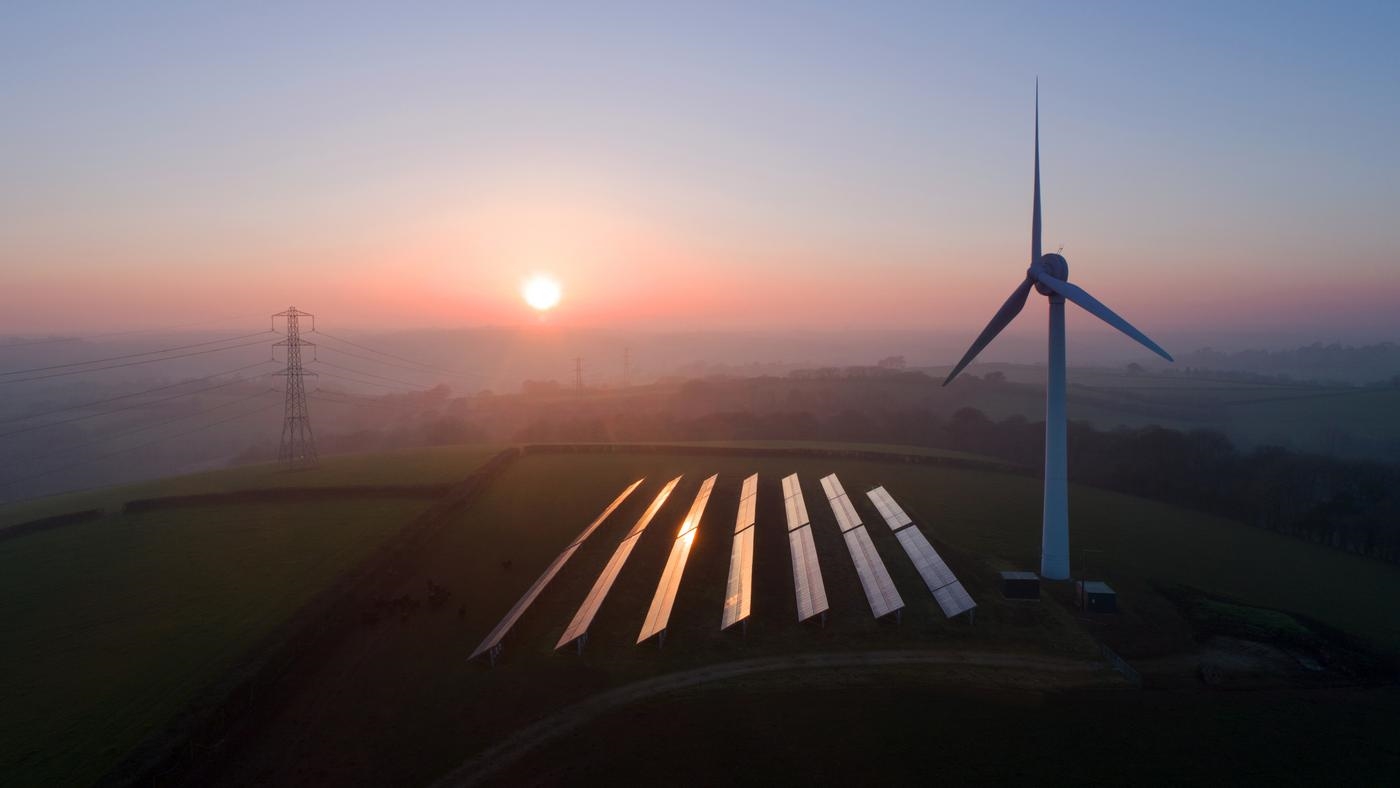Get Ed Crooks' Energy Pulse in your inbox every week
Upstream cost inflation is back
Prices for oilfield services are rising. The industry is worried that the good times will not last
1 minute read
Ed Crooks
Vice Chair Americas and host of The Energy Gang podcast

Ed Crooks
Vice Chair Americas and host of The Energy Gang podcast
Ed examines the forces shaping the energy industry globally.
Latest articles by Ed
-
Opinion
What does DeepSeek AI mean for energy?
-
Opinion
Questions over the Trump administration’s plans for solar and wind
-
Opinion
President Trump's executive orders on energy
-
Opinion
Does clean hydrogen have a future?
-
Opinion
The Biden administration finalises 45V hydrogen tax credit rules
-
The Edge
Five themes shaping the energy world in 2025
In Adam Smith’s Wealth of Nations, he draws a useful distinction between “natural prices” and “market prices”. The natural price of something is based on the wages of the workers and the return on the capital needed to produce it, and the rent on any land they use. The market price is set by the balance of supply and demand. Although market prices will often be different from the natural price, Smith wrote, “they are constantly trending towards it.”
It is a framework with immediate relevance to energy companies, as costs in the supply chain rise sharply. Are prices for services such as drilling and pressure pumping, and commodities such as steel and fuel, rising to a new equilibrium level after having been temporarily depressed? Or are they being temporarily driven above equilibrium levels by tight markets?
The effective consensus judgment of the oil and gas industry, as shown by budget and contract decisions in recent months, is that the tight markets in the supply chain are temporary. With some exceptions, production companies are not looking to tie up rigs on long-term contracts. Service companies are not planning to step up capital spending rapidly to increase capacity.
“The perception in the industry is: ‘We don’t believe this is going to continue. There is too much risk in the market’,” says Andrew Thorburn, Wood Mackenzie’s global head of cost analysis. “They have a tight market, but they don’t have confidence in the long-term view.”
Cost inflation for the upstream industry is running at levels not seen for a decade, or even longer in some sectors. Wood Mackenzie projects that ultra-deepwater floating rig rates will on average rise by 26% this year, while costs for offshore production facilities rise by 10%. Onshore, costs in the US Lower 48 are expected to rise by 15-20% on average this year.
Those averages conceal wide variations between companies. Operators that have been strategic about their procurement, plan carefully for their requirements and have built strong relationships with their suppliers are generally seeing lower rates of cost inflation, while those that have shorter-term planning horizons are often seeing much higher rates.
In general, although far from exclusively, the companies that have been able to manage their procurement strategically are the larger operators. Robert Clarke, Wood Mackenzie’s vice-president for US onshore research, noted that among US companies there has broadly been an inverse correlation between the size of their capital spending budgets and the pace of cost inflation reported in first quarter earnings. That is only an impressionistic measure, but it does highlight how the largest players, ExxonMobil and Chevron, have reported the slowest pace of cost inflation, while the independent E&Ps have typically reported higher rates.
It is worth noting that much of the upward pressure on costs is not specific to the upstream industry, but is being felt everywhere in the global economy. Higher prices for steel and for fuel, and shortages of staff such as truck drivers, are key factors in oil and gas industry and many other industries as well. Target, the US retail chain, said this week that it now expected to spend $1 billion more on freight costs in 2022 than it had projected at the start of the year.
Strengthening activity in the upstream industry is another factor helping to drive up costs, but it is not particularly intense by the standards of recent years. The number of active floating rigs worldwide is projected by Wood Mac to rise steadily out to 2026. But even by then it is expected to be well below the numbers active in 2017-19. Demand for subsea trees this year is set to be the strongest since 2018, but again well below its recent peak, in 2010-13.
Companies are not rushing to add new capacity for offshore drilling. There are currently 14 floating rigs under construction in shipyards around the world. That compares to nearly 100 rigs being built, backed by contracts with an operator, back in 2012-13. The last downturn was vicious: in 2020, five of the top ten drilling contractors filed for bankruptcy. Management teams and investors are wary of making the same mistake again, adding capacity too ambitiously just before demand crashes. With a few exceptions such as Petrobras and the companies developing large discoveries in Guyana and Suriname, operators are in general wary of signing long-term procurement contracts, for similar reasons.
The situation in the Lower 48 is similar. The number of land rigs active in the US has been rising for almost two years. But it is still about 10% below its level at the start of 2020. And although signs of real constraints in the service sector have emerged, the leading providers are not rushing to add additional capacity.
Jeff Miller, chief executive of Halliburton, said last month that the company’s hydraulic fracturing fleet in North America was sold out, “and the overall market appears all but sold out for the second half of the year.” But Halliburton is not ramping up investment to take advantage of these market conditions. As Miller put it: “For us, this is a margin cycle; it is not a build cycle.”
Chris Wright, chief executive of Liberty Oilfield Services, similarly highlighted the tightening market for fracturing services, but said the company had no plans to build new frac fleets. After many years of poor returns in North America, the service companies see an opportunity to strengthen profitability, and do not want to waste it.
For the time being, there is a disequilibrium in the oilfield services market. Oil and gas demand increasing while service providers hold back from adding capacity cannot go on forever.
In Adam Smith’s model, when the market price of a product rises above its natural price, then “the interest of all other labourers and dealers will prompt them to employ more labour and stock in preparing and bringing it [that product] to market.” That is one way that the oilfield services market could come back to equilibrium: providers changing their view and starting to add more capacity. If demand continues to rise, those capacity increases will eventually become unavoidable.
But it is also possible that the market will come back into equilibrium through a drop-off in demand. Given China’s continuing battle with Covid-19 (see Chart of the Week below) and central banks’ aggressive moves to raise interest rates to curb inflation, it could be a downturn in the world economy that decides the direction of the industry.
In brief
After a pause in Permian deals, consolidation may be back. Centennial Resource Development is combining with Colgate Energy in a merger of equals, to create the largest pure-play E&P in the Delaware Basin, with an estimated value of about $7 billion. Sean Smith, Centennial’s chief executive, said a key benefit of the deal would be “to provide shareholders with an accelerated capital return program through a fixed dividend coupled with a share repurchase plan”. The combined company will have about 180,000 net acres in the Delaware and production of about 135,000 barrels of oil equivalent a day.
The war in Ukraine has caused sharp price rises for wheat, sunflower oil and fertiliser, threatening to worsen the problems of acute food insecurity faced by 193 million people worldwide at the end of last year, a new report from NGOs including Oxfam and Save The Children has warned.
The Consumer Fuel Price Gouging Prevention Act, aimed at preventing “unconscionably excessive" gasoline and diesel prices, passed in the US House of Representatives with support from all but four of the Democrats who voted. The bill is seen as highly unlikely to become law, however: the Senate is expected to block it.
Tesla has been excluded from the S&P500 ESG index. In a blog post, Margaret Dorn, head of ESG indices for S&P Dow Jones Indices, said Tesla was excluded for several reasons, including “a decline in criteria level scores related to Tesla’s (lack of) low carbon strategy and codes of business conduct.” The decision brought an angry response from Elon Musk.
The US government is offering up to $3.5 billion in cost-sharing to support the creation of four regional direct air capture (DAC) hubs, for trapping and storing carbon dioxide from the atmosphere. The money, as explained in a federal government notice, was authorized by the infrastructure bill passed last year with bipartisan support in Congress.
EDF is pushing back the planned startup date of its Hinkley Point C reactor in England by a year to June 2027. It has also raised its estimate for the cost of the project to £25-26 billion.
Sam Bankman-Fried, founder of the digital asset exchange FTX, has said Bitcoin cannot scale up to play a much larger role in the world’s financial system because its energy use would be prohibitive.
Other views
Søren Lassen and Chris Seiple — Sea Change: Navigating the trillion-dollar offshore wind opportunity
Simon Flowers — How to rate IOCs’ resilience and sustainability
Kateryna Filippenko — Europe pivots away from Russian gas: how will the global market rebalance?
Gavin Thompson — Can the rest of the world repel China’s magnetic pull over rare earth metals?
Pascal Lamy — Preparing for climate overshoot
Henry Grabar — The decade of cheap rides is over
Quote of the week
“The world that we are heading for – and will almost inevitably arrive in in our lifetime – is really discombobulated and disordered from the one that you and I grew up in. And it scrambles our expectations for the future perhaps even more. That’s not to say that humans are going to go extinct, or the planet is going to die, or anything of that apocalyptic extreme. But everything that we know about modern life is the result, or grew up under, climate conditions which we can’t count on any longer. And I think we will be learning – we are learning already – just how much of our lives, even in well-developed prosperous quote unquote ‘modern’ parts of the world, are dependent on those climate conditions, and as a result are going to be dramatically disrupted with further warming.” — David Wallace-Wells, a journalist who has specialised in writing on climate change, went on a podcast to make the case for why global warming was still an urgent issue, even if the “apocalyptic extreme” outcomes are highly unlikely, and becoming less likely as a result of global climate policies and the falling cost of low-carbon energy.
Wallace-Wells has in the past highlighted the risk of those extremes, in a 2017 article titled ‘The Uninhabitable Earth’ and a book of the same name. Leading climate scientists criticised arguments in his article as “pure hyperbole” and often “inaccurate, wrong or… missing important context,” and said he painted “an overly bleak picture” of the impact of global warming.
Chart of the week
This comes from the latest in our series of regular briefings on the implications for energy of Russia’s war in Ukraine. This week, it had a focus on the consequences in Asia. It is worth remembering that while many of us are focused intently on the war, in terms of the broader economic impact the lockdowns in China may be more significant, especially in Asia.






